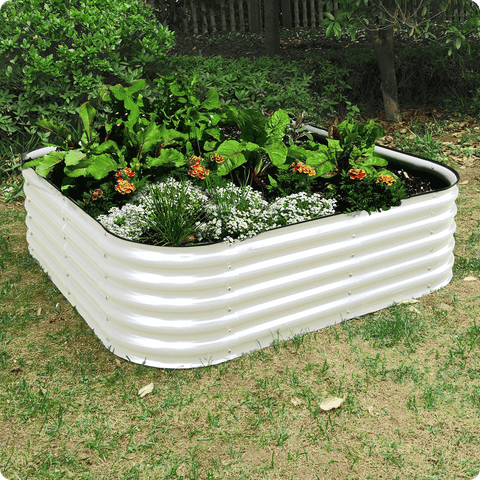Tips from Olle Garden Bed: 4 Signs of Over Watering New Turf
Fresh turf needs regular watering to take root, but over watering is possible. Unfortunately, over irrigation makes the turf vulnerable to fungi, pests and diseases. The new turf is fragile and needs proper care, but like many plants, it will let you know if there is a problem. So, how do you know if you are a little heavy on the watering hose? The following content also has some reference value for raised garden beds.

Next, you will find four common signs of over watering new turf. After that, you will receive some instructions on how to restore the overwatered turf and how to avoid this problem in the first place.
- Wet soil or turf
Many common symptoms of over watering can also be the result of insufficient watering. This is because the turf will dry and die. On the other hand, wet soil or turf directly points to over watering.
If you notice pasty, spongy turf or muddy areas, it is likely that over watering is the problem. You should thoroughly water the turf twice a day. If you live in a hot climate or summer, you may need to adjust this setting.
If properly maintained, the turf should feel moist and the soil should be moist. If the turf is completely dry, it needs watering.
- Unable to weave in soil
If your turf cannot be properly woven, it is likely that the problem is improper irrigation, whether it is too much or not. You can determine whether your turf is entering the soil by gently lifting the corner - if it is easy to lift, the root is not established. Remember that the root of the sod should remain on the ground after about two weeks.
Other reasons why sod cannot be established include improper soil preparation. You need to test the soil pH, fertilize the area, and cultivate the soil to ensure that the turf has the best growth conditions.
If you plant grass on the slope, the turf may also be unacceptable due to slipping. As a simple solution, use wooden stakes at each corner of the turf to help it stay in place as the root is established.
- Yellow grass leaves
Yellow grass leaves, like yellow leaves on plants, are a sign that something is wrong. The problem includes everything from root rot to pests, so it is important to check the turf comprehensively. Yellow grass with wet grass and muddy soil and inability to weave often indicate excessive watering.
Yellow grass is also usually the result of lawn diseases, such as brown patches, which are usually the result of over irrigation. Fortunately, the solution to this disease is often simple: stop overwatering the lawn, properly clean the mower, and dispose of cuttings to avoid the spread of fungi.
- Rotten roots
If the roots are not woven into the soil, the turf is wet and the grass turns yellow, it is time to check the root rot. Root rot is usually easy to identify: brown, pasty roots, and a putrid smell. Unfortunately, root rot is not a simple solution to turf and needs to be replaced. The white and thick root means that the root rot has not formed yet, and the turf can be fixed.

How to repair and prevent excessive watering of turf
Once you find the turf flooded, you should stop watering. If you do not notice any wet soil, but suspect that your lawn is suffering from excessive irrigation, check for other signs. Keep in mind that there may be other factors at work.
After drying the turf, you need to change the watering schedule. The type of grass, weather conditions, and moisture content of the sod all affect how often you need to water. As a general rule of thumb, the turf needs to be deeply watered twice a day for 15 minutes each time when it is first installed until the root is established.
After the turf is established, you should water it in the morning to allow the base course time to absorb water at the hottest time of the day. In rainy season, you need to water less, and in hot season, you need to water more. You can also install sprinklers to ensure proper coverage and avoid over or under watering. Generally speaking, most lawns need to be watered once a week.
To repair and prevent over watering, you can use an aerator or pitchfork to inflate the lawn to improve drainage. This will form pockets in the soil, allowing water to pass through and carry oxygen to the roots. The accumulation of thatch, i.e. dead leaves, stems and roots, will also affect drainage and airflow. Regularly use a thatcher or power rake to remove the lawn to prevent over watering.
If the grass is brown and dead and does not return after several weeks of proper care, you may need to install fresh turf.

Too much watering is not dirty turf!
If you think your turf is watered too much, please pay attention to weaving failure, rotten roots, yellow grass and wet soil. Keep in mind that these signs may point to other problems, but if you notice that they combine, over watering may be the culprit.
Successful turfing requires time and patience, as well as proper watering techniques. Fortunately, it is easy to bring the turf back to life (if it has not experienced root rot) and implement new watering procedures, which will help it thrive and help you avoid over watering.
